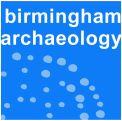St Thomas Street / Chapman's Yard, Scarborough. A programme of Archaeological Investigations
Birmingham Archaeology, 2017. https://doi.org/10.5284/1046271. How to cite using this DOI
Data copyright © University of Birmingham unless otherwise stated
This work is licensed under the ADS Terms of Use and Access.
Primary contact
Historic England
1 Waterhouse Square
138-142 Holborn
London
EC1N 2ST
UK
Tel: 01793 414700
Fax: 01793 414707
Resource identifiers
- ADS Collection: 2956
- DOI:https://doi.org/10.5284/1046271
- How to cite using this DOI
Introduction

An archaeological evaluation and subsequent excavation was undertaken by Birmingham Archaeology, of land off North Street, Scarborough. The work was commissioned by Phoenix Consulting Archaeology Ltd, initially on behalf of Crest Nicholson Estates and subsequently by Hampton Brook Developments Ltd. The work was undertaken in order to inform the planning process prior to the proposed development of the site. Subsequent to the building work a final phase of watching brief took place in Spring 2004. Nothing of archaeological significance was recorded during that phase of work.
The fieldwork was carried out on the site in January 2003. The evaluation of seven trenches illustrated that across the majority of the site extensive post-medieval building foundations and associated areas of levelling and drainage had severely reduced the potential for the recovery of surviving medieval remains. However, archaeological evidence proved to survive somewhat better in two trenches (5 and 7), such that it was required that they be extended, each to a minimum area of 5.0m by 5.0m. Overall, two phases of activity were identifiable. These two phases were quite broadly defined due to the widespread impact of later medieval and post-medieval activity on the site.
Phase 1 (late medieval to early post-medieval), was characterised by a number of pits or tanks exposed in Trench 5. The recovered artefacts suggest that these features related to a phase of archaeological activity during or just after the late medieval period. The presence of post-medieval pottery and pieces of clay-pipe at the base of a number of features in the Trench 5 was indicative of the view that the potential for extensive survival of medieval remains was unlikely.
Phase 2 (late post-medieval to early modern), was characterised by a number of parallel linear features representing a network of drains. These contained waterlogged deposits and an interesting assemblage of pottery. In addition, further pits and linear features were exposed. Overall, evidence of early modern building activity throughout the site highlighted the widespread nature of trunctation and disturbance.
Subsequently, a watching brief was undertaken at Chapman's Yard, Scarborough. The project was commissioned by Phoenix Consulting on behalf of Crest Nicholson Properties Ltd. Documentary evidence and previous field evaluation of the site suggested the presence of an early medieval settlement, a medieval church, a cemetery and hospital, together with an eighteenth century poorhouse and a nineteenth century workhouse. However, much of the Chapman's Yard area was truncated by nineteenth century cellars, reducing the potential for surviving earlier deposits.
The watching brief identified nineteenth century layer of black silt containing residual seventeenth to nineteenth century ceramics. The animal bone assemblage suggested butchery and tanning had formerly taken place at Chapman's Yard. A large stone built reservoir was identified on the site, which appears to have been contemporary with mid-nineteenth century buildings.







